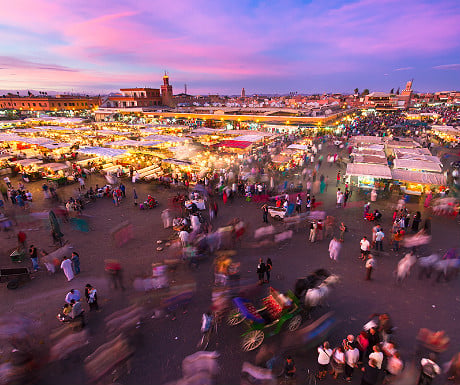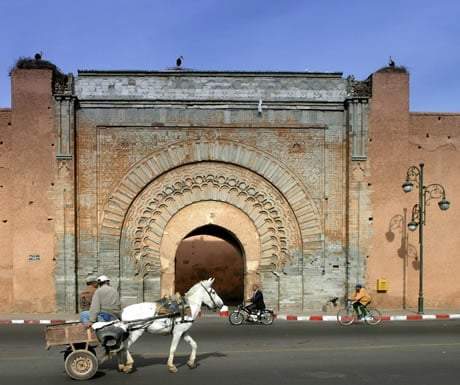Centuries upon centuries of a variety of cultures, languages and civilisations have imbued Marrakech with a rich, multi-layered legacy, which can be experienced all around the city in the numerous examples of history, art and architecture that remain. From the beautiful confluence of European and traditional Moroccan culture seen in the city of Mazagan, to the winding paths of Essaouria, you’ll discover the multiplicity of cultures and traditions that give Marrakech its distinct and unique charm.

Ksar of Ait-Benhaddou
The dramatic landscape of Ait Benhaddou presents the remarkable sight of one of the most stunning examples of a traditional Kasbah – a group of homes, courtyards and public buildings within an enclosed fortified area. With its angular construction, featuring angular towers and modest buildings across various layers, the result is imposing and striking, and the area has been captured on film numerous times as the backdrop to many Hollywood epics. Visitors to the area can immediately feel transported back in time through the diverse, well-preserved buildings that make up the Ksar.

Medina of Marrakech
Spanning back to the 11th century, the original Medina played a pivotal role for the ruling Almoravids as an important centre of commerce and culture. Consequently the Medina hosts several architectural gems, including the Koutoubiya Mosque, the Saadian Tombs, Bandia Palace and an array of beautiful gardens. Alongside the many historical buildings that populate the Medina, contemporary visitors can enjoy the vibrant, bustling atmosphere that permeates the area – with a maze of narrow, winding streets, traditional souks, street artists, food stalls and much more, the Medina remains the lively heart of Marrakech.

Medina of Essaouria
The port city of Essaouria lies a short drive away from Marrakech, and has long played an important role as a vital trading post between Morocco, Europe and the wider world. It reached its peak during the mid 18th century as a vital centre of international commerce, and the Medina that arose in the town during this period reflects the city’s mixed heritage, drawing on traditional North African architectural principles as well as contemporary European military practices. Today, the original Medina remains exceptionally well-preserved and visitors can explore the original maze of alleyways, brimming with market stalls, restaurants and artists, filling Essaouria with its distinctive laidback atmosphere.

Portuguese city of Mazagan (El Jadida)
The long relationship between Morocco and Portugal extends as far back as the 8th century, though it was not until the 15th and 16th centuries that Portugal began to establish its presence in the country. Though their occupation was relatively shortlived, the Portuguese influence has left its mark, and this is particularly evident in the city of Mazagan. Located on the Atlantic Coast, the city is a testament to the early development of Renaissance culture – most notable is the Citerne Portuguese, an enormous vaulted cistern made famous as the backdrop to Orson Welles’ 1954 Othello. The city also features many other examples of Gothic architecture, giving the city a unique character in contrast to other more traditional neighbouring locations.

Image #1: Shutterstock
Stéphane Abtan is Director at Dar Ayniwen.

Post a Comment